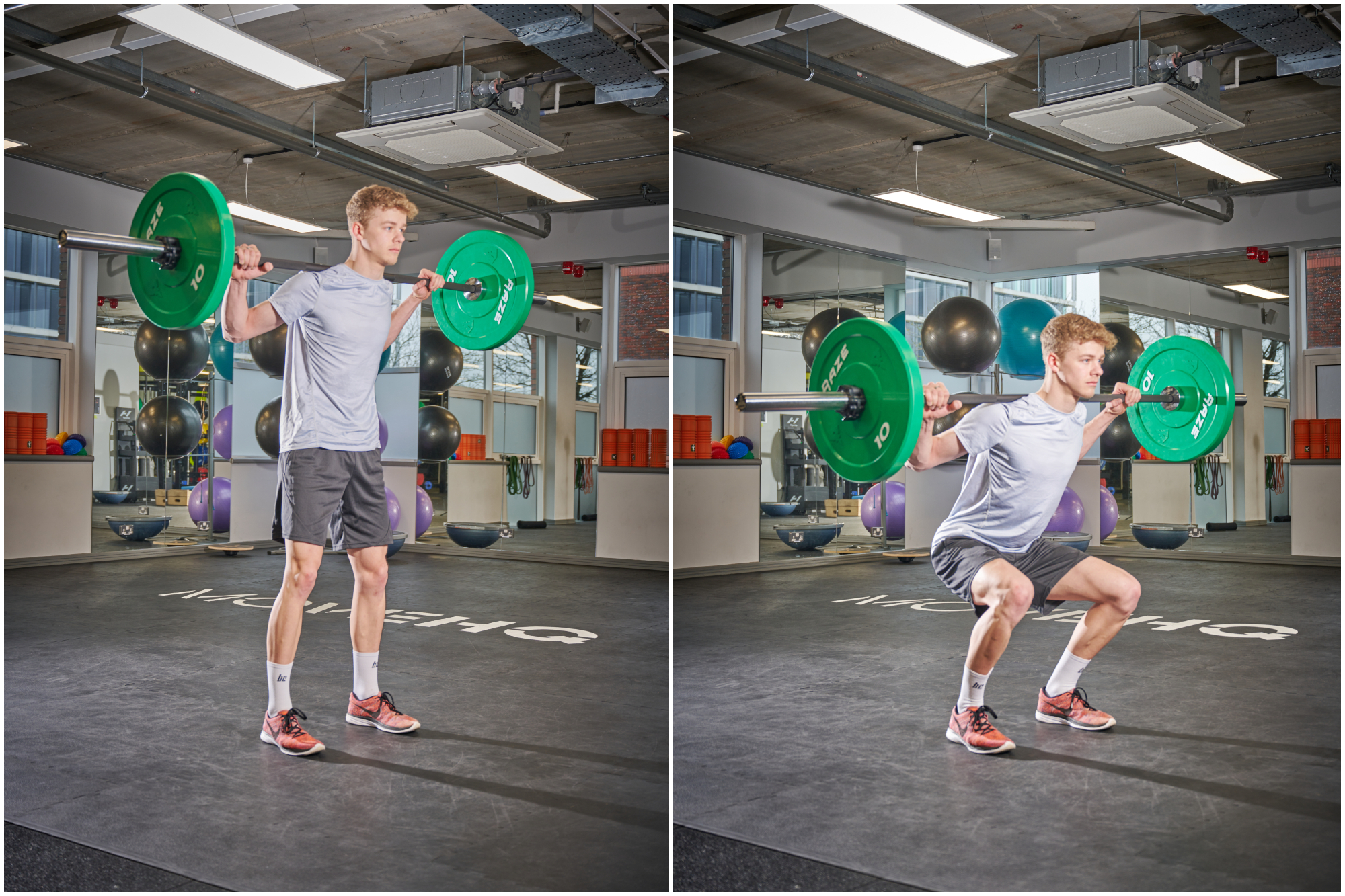Ask a coach: ‘What's the most effective off-the-bike exercise for improving my max power?’
The more type 2 muscle fibers you can contract quickly, the greater the amount of force can be produced. This is where gym work can help


Having a ‘high’ max sprint is often the desire for many - whether it’s for the glory of winning the town sign sprint against your mates or battling it out for the sprint finish in a race. Particularly in race contexts, having a high max power is often advantageous for easily responding to and closing down attacks.
With that in mind, cycling coach Alex Welburn is on hand to take us through the science behind sprint power and the factors you need to consider - as well as offering some practical suggestions on how you can improve this area in your off-the-bike training.

Performance cycling coach Alex Welburn is one of the experts who will be answering your questions in Cycling Weekly's Ask a Cycling Coach series, online every Wednesday. He's currently completing a PhD on Critical power and W' at Loughborough University whilst also managing the Performance Project, in which he coaches athletes and provides consultation.
Let’s cover the fundamentals first. Maximal power is attributed to the contractile speed of type 2 muscle fibers, AKA your sprint fibers. The more of these fibers, the greater the amount of force that can be produced. Whilst these do get developed by on-the-bike sprint training, you’ll see greater gains by adding in targeted exercises off-the-bike.
With any exercise in the gym, having good form and technique will help prevent injury, so if you are unsure, seek the help of a strength and conditioning coach.
It’s worth remembering that gym work should be periodized, just like your on-the-bike training would be. But although most cyclists stop weight training during the racing season, I would advise you to keep it in there (at a lower level) as a form of maintenance.
Off-the-bike routine for improving max power

The best off-the-bike exercises to improve your sprint are consistent with a range of movements in the gym - here’s the top three exercises I would recommend for cyclists.
Hip Thrusts – you can do this with a barbell and have your back against a bench. The focus here is being fast and explosive, this will help to develop the glutes.
Get The Leadout Newsletter
The latest race content, interviews, features, reviews and expert buying guides, direct to your inbox!
Squats – a common exercise for cyclists, there are a variety of different ways you can do this. You can build absolute strength by doing 5 x 5 at around 80-90% of your 1 rep max. Additionally, you can also hold the bottom of a squat for 1-2 seconds and then aim to power up. With the aim of developing your explosivity.
Box Jumps – there are so many ways you can do this. (1) simple squat jumps onto a box as 3 sets of 10 jumps. [2] another variation is to go into a squat position where your knee angle is around 90 degrees hold that for 1-2 seconds and then jump from there. A similar position to the top of the pedal stroke; as if you were sprinting.
Overall, there are lots of ways you can look to improve your max power, on and off the bike, but context is always key here. Take a look at the bigger picture and this will help direct what you need to do and why. The gym is there to help you develop your strength, and then your bike sessions condition it.
How else can you improve your sprinting?
That all being said, often your Critical Power (CP) / Functional Threshold Power (FTP) is the limiting factor when it comes to sprints, not the sprint power. Let me explain. When we go above our threshold, we will then start to accumulate and deplete fatigue metabolites and high-energy stores, such as Phosphocreatine (PCr).
Whilst this is a simple overview of it, we require oxygen phosphorylate Pi [inorganic Phosphate] and Cr [creatine] which is formed when we break done PCr. Pi also starts to interfere with our muscle contractions, which reduces our contractile force reducing our power output.
This is where our CP/FTP comes into it, as CP is underpinned by type 1 muscle fibre types and the number of capillaries surrounding these fibers. Essentially, developing an enhanced skeletal system for delivering oxygen - which will improve your ability to recover faster - will also improve max sprint power at the end of a race or longer ride. This is a term we note as ‘repeatability’.
Can I analyze this?
A quick way to assess this is by looking at the time spent above CP during a criterium race. In some analytics, you can also look at power loss by looking at the average power trend. So, if you increase your CP/FTP this, in theory, could mean you spend less time above it, allowing you to be in a fresher state for the sprint finish.
So don’t neglect your threshold power if you want to improve your sprint for criterium and road races. This focus on CP/FTP allows you to be in a less fatigued state for when you need to sprint - however, you will still need to do sprint-specific work such as the off-the-bike routine I detailed above.

Thank you for reading 20 articles this month* Join now for unlimited access
Enjoy your first month for just £1 / $1 / €1
*Read 5 free articles per month without a subscription

Join now for unlimited access
Try first month for just £1 / $1 / €1
Alex is a Physiologist, Performance Coach, who also lectures occasionally at Loughborough
University where he is completing his PhD in Critical power and W'.
After competing for over 10 years on the bike, where he has competed for GB in both
cyclocross and mountain bike events, he now spends his spare time in the mountains as an
aspiring guide. Alex has worked with cyclists of all levels over the last 9 years, from ultra-
endurance world champions to the Women’s TDF. Supporting his PhD he manages The
Performance Project, consulting with and coaching athletes. Finally, he is also a proud
sponsor of southern based LAKA X Pedal Mafia Race Team.
-
 A bike rack with an app? Wahoo’s latest, and a hub silencer – Sea Otter Classic tech highlights, Part 2
A bike rack with an app? Wahoo’s latest, and a hub silencer – Sea Otter Classic tech highlights, Part 2A few standout pieces of gear from North America's biggest bike gathering
By Anne-Marije Rook
-
 Cycling's riders need more protection from mindless 'fans' at races to avoid another Mathieu van der Poel Paris-Roubaix bottle incident
Cycling's riders need more protection from mindless 'fans' at races to avoid another Mathieu van der Poel Paris-Roubaix bottle incidentCycling's authorities must do everything within their power to prevent spectators from assaulting riders
By Tom Thewlis